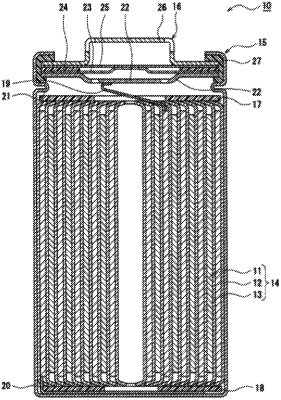| CPC H01M 4/525 (2013.01) [C01G 53/42 (2013.01); H01M 4/366 (2013.01); H01M 10/0525 (2013.01); C01P 2004/84 (2013.01); C01P 2006/40 (2013.01); H01M 2004/028 (2013.01)] | 6 Claims |

|
1. A positive electrode active material for a non-aqueous electrolyte secondary battery, comprising:
lithium transition metal oxide particles include a metal element M* and M* consists of at least one metal element from the group consisting of Mg, Al, Sc, Ti, V, Cr, Co, Ni, Cu, Zn, Ga, Ge, Y, Zr, Sn, Sb, Pb, and Bi;
a metal oxide M1 comprising tungsten (W) and adhering to surfaces of the lithium transition metal oxide particles, wherein the metal oxide M1 lacks lithium (Li);
a lithium metal oxide M2 is a complex metal oxide comprising lithium (Li), tungsten (W) and the metal element M*, the lithium metal oxide M2 adhering to the surfaces of the lithium transition metal oxide particles, and
wherein an amount in mole percent of the lithium metal oxide M2 adhering to the surfaces of the lithium transition metal oxide particles is larger than an amount in mole percent of the metal oxide M1 adhering to the surfaces of the lithium transition metal oxide particles;
wherein the content of M1 is less than 0.2 mol % and M2 is 0.2 to 4 mol %;
wherein M1 and M2 are adhered by heat treatment to the surfaces of the lithium transition metal oxide particles; and, the heat treatment temperature is 300 to 500° C.;
a metal oxide M3 comprising a metal element M,
wherein the metal element M is at least one selected from among Al, Ti, Ga, Sn, and Bi;
and M3 does not include Li.
|